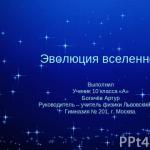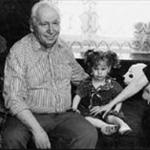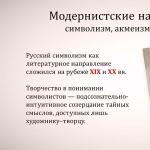Nuclear weapon
Nuclear weapons are a set of nuclear weapons, means of delivering them to the target and control means. Refers to weapons of mass destruction (along with biological and chemical weapons). A nuclear weapon is an explosive device that uses nuclear energy - energy released as a result of an avalanche-like chain nuclear reaction divisions heavy nuclei and/or thermonuclear reaction synthesis of light nuclei.
The action of nuclear weapons is based on the use of the explosion energy of a nuclear explosive device, released as a result of an uncontrolled avalanche-like chain reaction of fission of heavy nuclei and/or thermonuclear fusion reaction.
Nuclear explosions can be of the following types:
· air - in the troposphere
· high-altitude - in the upper layers of the atmosphere and in near-planetary space
· cosmic - in deep circumplanetary space and any other area of outer space
ground explosion - near the ground
· underground explosion (under the surface of the earth)
surface (near the surface of the water)
underwater (underwater)
Damaging factors of a nuclear explosion:
shock wave
light radiation
· penetrating radiation
· radioactive contamination
· electromagnetic pulse (EMP)
The ratio of the power of influence of various damaging factors depends on the specific physics of a nuclear explosion. For example, for thermonuclear explosion are characteristically stronger than those of the so-called. An atomic explosion produces light radiation, a gamma-ray component of penetrating radiation, but a much weaker corpuscular component of penetrating radiation and radioactive contamination of the area.
People directly exposed to the damaging factors of a nuclear explosion, in addition to physical damage, which is often fatal to humans, experience a powerful psychological impact from the terrifying sight of the explosion and destruction. An electromagnetic pulse (EMP) does not have a direct effect on living organisms, but can disrupt the operation of electronic equipment (tube electronics and photonic equipment are relatively insensitive to the effects of EMP).
Classification of nuclear weapons
All nuclear weapons can be divided into two main categories:
· “atomic” - single-phase or single-stage explosive devices in which the main energy output comes from the nuclear reaction of fission of heavy nuclei (uranium-235 or plutonium) with the formation of lighter elements
· thermonuclear (also “hydrogen”) - two-phase or two-stage explosive devices in which two are sequentially developed physical process, localized in various areas space: at the first stage, the main source of energy is the fission reaction of heavy nuclei, and at the second, fission and thermonuclear fusion reactions are used in different proportions, depending on the type and configuration of the ammunition
The power of a nuclear charge is measured in TNT equivalent - the amount of trinitrotoluene that must be detonated to produce the same energy. It is usually expressed in kilotons (kt) and megatons (Mt). The TNT equivalent is conditional: firstly, the distribution of the energy of a nuclear explosion among various damaging factors depends significantly on the type of ammunition, and, in any case, is very different from a chemical explosion. Secondly, it is simply impossible to achieve complete combustion of the corresponding amount of chemical explosive.
It is customary to divide nuclear weapons into five groups according to their power:
· ultra-small (less than 1 kt)
· small (1 - 10 kt)
medium (10 - 100 kt)
· large (high power) (100 kt - 1 Mt)
· extra-large (extra-high power) (over 1 Mt)
Nuclear detonation options
Cannon scheme
The "cannon design" was used in some first generation nuclear weapons. The essence of the cannon circuit is to fire a charge of gunpowder from one block of fissile material of subcritical mass (“bullet”) into another stationary one (“target”).
Classic example cannon diagram is the “Little Boy” bomb dropped on Hiroshima on August 6, 1945.
Implosive circuit
 An implosive detonation scheme uses the compression of fissile material by a focused shock wave created by the detonation of a chemical explosive. To focus the shock wave, so-called explosive lenses are used, and the detonation is carried out simultaneously at many points with high precision. The formation of a converging shock wave was ensured by the use of explosive lenses from “fast” and “slow” explosives - TATV (triaminotrinitrobenzene) and baratol (a mixture of trinitrotoluene with barium nitrate), and some additives (see animation). The creation of such a system for the placement of explosives and detonation was at one time one of the most difficult and time-consuming tasks. To solve it, it was necessary to perform a gigantic amount of complex calculations in hydro- and gas dynamics.
An implosive detonation scheme uses the compression of fissile material by a focused shock wave created by the detonation of a chemical explosive. To focus the shock wave, so-called explosive lenses are used, and the detonation is carried out simultaneously at many points with high precision. The formation of a converging shock wave was ensured by the use of explosive lenses from “fast” and “slow” explosives - TATV (triaminotrinitrobenzene) and baratol (a mixture of trinitrotoluene with barium nitrate), and some additives (see animation). The creation of such a system for the placement of explosives and detonation was at one time one of the most difficult and time-consuming tasks. To solve it, it was necessary to perform a gigantic amount of complex calculations in hydro- and gas dynamics.
The second of the atomic bombs used, “Fat Man,” dropped on Nagasaki on August 9, 1945, was executed according to the same scheme.
Nuclear weapons are the most destructive and absolute in the world. Beginning in 1945, the largest nuclear explosion tests in history were carried out, which showed the horrific consequences of a nuclear explosion.
Since the first nuclear test on July 15, 1945, more than 2,051 other nuclear weapons tests have been recorded around the world.
No other force represents such absolute destruction as nuclear weapons. And this type of weapon quickly becomes even more powerful over the decades after the first test.
Trial nuclear bomb in 1945 it had a yield of 20 kilotons, that is, the bomb had an explosive force of 20,000 tons of TNT. Over the course of 20 years, the United States and the USSR tested nuclear weapons with a total mass of more than 10 megatons, or 10 million tons of TNT. For scale, this is at least 500 times stronger than the first atomic bomb. To bring the size of the largest nuclear explosions in history to scale, the data was derived using Alex Wellerstein's Nukemap, a tool for visualizing the horrific effects of a nuclear explosion in the real world.
In the maps shown, the first explosion ring is a fireball, followed by a radiation radius. The pink radius displays almost all building destruction and 100% fatalities. In the gray radius, stronger buildings will withstand the explosion. In the orange radius, people will suffer third-degree burns and flammable materials will ignite, leading to possible firestorms.
The largest nuclear explosions
Soviet tests 158 and 168
On August 25 and September 19, 1962, less than a month apart, the USSR conducted nuclear tests over the Novaya Zemlya region of Russia, an archipelago in northern Russia near the Arctic Ocean.
No videos or photographs of the tests remain, but both tests involved the use of 10-megaton atomic bombs. These explosions would have burned everything within 1.77 square miles at ground zero, causing third-degree burns to victims in an area of 1,090 square miles.
Ivy Mike
On November 1, 1952, the United States conducted an Ivy Mike test over the Marshall Islands. Ivy Mike - the first in the world H-bomb and had a yield of 10.4 megatons, which is 700 times stronger than the first atomic bomb.
Ivy Mike's explosion was so powerful that it vaporized the island of Elugelab where it was blown up, leaving a 164-foot deep crater in its place.
Castle Romeo
Romeo was the second nuclear explosion in a series of tests carried out by the United States in 1954. All explosions took place at Bikini Atoll. Romeo was the third most powerful test of the series and had a yield of approximately 11 megatons.
Romeo was the first to be tested on a barge in open waters rather than on a reef, as the US was quickly running out of islands on which to test nuclear weapons. The explosion will burn everything within 1.91 square miles.

Soviet Test 123
On October 23, 1961, the Soviet Union conducted nuclear test No. 123 over Novaya Zemlya. Test 123 was a 12.5 megaton nuclear bomb. A bomb this size would burn everything within 2.11 square miles, causing third-degree burns to people over an area of 1,309 square miles. This test also left no records.
Castle Yankee
Castle Yankee, the second most powerful of the series of tests, was conducted on May 4, 1954. The bomb had a yield of 13.5 megatons. Four days later, its radioactive fallout reached Mexico City, a distance of about 7,100 miles.
Castle Bravo
Castle Bravo was carried out on February 28, 1954, was the first of a series of Castle tests and the largest US nuclear explosion of all time.
Bravo was originally intended to be a 6-megaton explosion. Instead, the bomb produced a 15-megaton explosion. His mushroom reached 114,000 feet in the air.
The US military's miscalculation resulted in the radiation exposure of approximately 665 Marshallese residents and the death from radiation exposure of a Japanese fisherman who was 80 miles from the explosion site.
Soviet tests 173, 174 and 147
From August 5 to September 27, 1962, the USSR conducted a series of nuclear tests over Novaya Zemlya. Test 173, 174, 147 and all stand out as the fifth, fourth, and third strongest nuclear explosions in history.
All three explosions produced had a power of 20 Megatons, or about 1000 times stronger than the Trinity nuclear bomb. A bomb of this strength would destroy everything within three square miles in its path.
Test 219, Soviet Union
On December 24, 1962, the USSR conducted test No. 219, with a yield of 24.2 megatons, over Novaya Zemlya. A bomb of this strength can burn everything within 3.58 square miles, causing third-degree burns in an area of up to 2,250 square miles.
Tsar bomb
On October 30, 1961, the USSR detonated the largest nuclear weapon ever tested and created the largest man-made explosion in history. The result was an explosion 3,000 times stronger than the bomb dropped on Hiroshima.
The flash of light from the explosion was visible 620 miles away.
The Tsar Bomba ultimately had a yield of between 50 and 58 megatons, twice the size of the second largest nuclear explosion.
A bomb of this size would create a fireball measuring 6.4 square miles and would be capable of causing third degree burns within 4,080 square miles of the bomb's epicenter.

First atomic bomb
The first atomic explosion was the size of the Tsar Bomb, and to this day the explosion is considered to be of an almost unimaginable size.
According to NukeMap, this 20-kiloton weapon produces a fireball with a radius of 260 m, approximately 5 football fields. Damage estimates indicate that the bomb would deliver lethal radiation 7 miles wide and produce third-degree burns over 12 miles. If such a bomb were used in lower Manhattan, more than 150,000 people would be killed and the fallout would extend into central Connecticut, according to NukeMap calculations.

The first atomic bomb was tiny by nuclear weapons standards. But its destructiveness is still very great for perception.
A nuclear explosion is an uncontrollable process. During this process, the release occurs large quantity radiant and thermal energy. This effect is the result of a nuclear chain reaction of fission or thermonuclear fusion occurring over a short period of time.
Brief general information
A nuclear explosion in its origin may be a consequence human activity on Earth or in near-Earth space. This phenomenon also in some cases occurs as a result of natural processes on certain types of stars. An artificial nuclear explosion is a powerful weapon. It is used to destroy large-scale ground and underground protected objects, accumulations of enemy equipment and troops. In addition, this weapon is used for the complete destruction and suppression of the opposing side as a tool that destroys small and large settlements with civilians living in them, as well as strategic industrial facilities.
Classification
As a rule, nuclear explosions are characterized by two criteria. These include the charge power and the location of the charge point directly at the blasting moment. The projection of this point onto the surface of the earth is called the epicenter of the explosion. Power is measured in TNT equivalent. This is the mass of trinitrotoluene, the detonation of which releases the same amount of energy as the estimated nuclear explosion. The most commonly used units when measuring power are one kiloton (1 kt) and one megaton (1 Mt) of TNT equivalent.

Phenomena
A nuclear explosion is accompanied by specific effects. They are characteristic only of this process and are not present in other explosions. The intensity of the phenomena that accompany a nuclear explosion depends on the location of the center. As an example, we can consider the case that was the most common before the ban on testing on the planet (under water, on land, in the atmosphere) and, in fact, in space - an artificial chain reaction in the ground layer. After the detonation of the fusion or fission process, in a very short time (about fractions of microseconds), a huge amount of thermal and radiant energy is released in a limited volume. The completion of the reaction is usually indicated by the disintegration of the device structure and evaporation. These effects are due to the influence of elevated temperature (up to 107 K) and enormous pressure (about 109 atm) at the epicenter itself. From a great distance, this phase visually appears as a very bright luminous point.

Electromagnetic radiation
Light pressure during the reaction begins to heat and displace the surrounding air from the epicenter. As a result, a fireball is formed. At the same time, a pressure jump is formed between the compressed radiation and undisturbed air. This is due to the superiority of the speed of movement of the heating front over the sound speed under environmental conditions. After the nuclear reaction enters the decay stage, the release of energy stops. Subsequent expansion is carried out due to the difference in pressure and temperature in the zone of the fireball and the immediate surrounding air. It should be noted that the phenomena under consideration have nothing to do with scientific research the hero of the modern TV series (by the way, his name is the same as the famous physicist Glashow - Sheldon) "The Big Bang Theory".
Penetrating radiation
Nuclear reactions are a source of electromagnetic radiation different types. In particular, it manifests itself in a wide spectrum ranging from radio waves to gamma rays, atomic nuclei, neutrons, fast electrons. The emerging radiation, called penetrating radiation, in turn, gives rise to certain consequences. They are characteristic only of a nuclear explosion. High-energy gamma quanta and neutrons, in the process of interaction with atoms that make up the surrounding matter, undergo the transformation of their stable form into unstable radioactive isotopes with different half-lives and paths. As a result, so-called induced radiation is formed. Together with fragments of atomic nuclei of fissile matter or with products from thermonuclear fusion that remain from an explosive device, the resulting radioactive components rise into the atmosphere. Then they disperse over a fairly large area and form an infestation in the area. The unstable isotopes that accompany a nuclear explosion are in such a spectrum that the spread of radiation can continue for millennia, even though the intensity of the radiation decreases over time.

Electromagnetic pulse
High-energy gamma rays generated from a nuclear explosion in the process of passing through environment ionize the atoms that make up its composition, knocking out electrons from them and imparting to them quite a lot of energy to carry out cascade ionization of other atoms (up to thirty thousand ionizations per gamma quantum). As a result, a “spot” of ions with a positive charge and surrounded by electron gas in huge quantities is formed under the epicenter. This configuration of carriers, variable in time, forms a powerful electric field. It, together with the recombination of ionized atomic particles disappears after the explosion. The process generates strong electrical currents. They serve as additional source radiation. The entire described complex of effects is called an electromagnetic pulse. Despite the fact that less than 1/3 of a ten-billionth share of explosive energy goes into it, it occurs within a very short period. The power released in this case can reach 100 GW.

Ground-type processes. Peculiarities
During the process of chemical detonation, the temperature of the soil adjacent to the charge and attracted to the movement is relatively low. A nuclear explosion has its own characteristics. In particular, the ground temperature can be tens of millions of degrees. Most of the energy generated from heating is released into the air during the first moments and is additionally used to form a shock wave and thermal radiation. In a normal explosion, these phenomena are not observed. In this regard, there are sharp differences in the impact on the soil mass and the surface. In a ground explosion chemical compound up to half of the energy is transferred to the ground, and with nuclear energy - literally a few percent. This causes the difference in the size of the crater and the energy of seismic vibrations.

Nuclear winter
This concept characterizes the hypothetical state of the climate on the planet in the event of a large-scale war using nuclear weapons. Presumably, due to the release of a huge amount of soot and smoke into the stratosphere, the results of numerous fires provoked by several warheads, the temperature on Earth will drop everywhere to Arctic levels. This will also be due to a significant increase in the number of solar rays reflected from the surface. The likelihood of global cooling was predicted quite a long time ago (back when Soviet Union). Later, the hypothesis was confirmed by model calculations.
Nuclear explosion power
1) its energy characteristic, usually expressed as TNT equivalent. It is caused by the mechanical and thermal effects of the explosion, as well as the energy of instantaneous neutron and gamma radiation. Nuclear ammunition according to the explosion power is conventionally divided into ultra-small (up to 1 thousand tons), small (from 1 to 10 thousand tons), medium (from 10 to 100 thousand tons), large (from 100 thousand to 1 million tons ) and extra-large (from 1 million tons or more);
2) quantitative characteristic explosion energy of a nuclear weapon, usually expressed in TNT equivalent. The power of a nuclear explosion includes the energy that determines the development of the mechanical and thermal effects of the explosion, and the energy of instantaneous neutron and gamma radiation. The energy of radioactive decay of fission products is not taken into account. A nuclear explosion of 1 kg of uranium-235 or plutonium-239 with the complete fission of all nuclei is equivalent in released energy to a chemical explosion of 20,000 tons of TNT.
EdwART. Glossary of terms of the Ministry of Emergency Situations, 2010
See what “Nuclear explosion power” is in other dictionaries:
Nuclear explosion power- a quantitative characteristic of the explosion energy of a nuclear weapon, usually expressed in TNT equivalent. The power of a nuclear explosion includes the energy that determines the development of the mechanical and thermal effects of the explosion, and the energy of instantaneous... ... Civil protection. Conceptual and terminological dictionary
Nuclear power- quantitative characteristics of the explosion energy of a nuclear weapon. Usually expressed as a TNT equivalent (a mass of TNT whose explosion energy is equal to the explosion energy of a given nuclear weapon) in tons, kplotons and megatons... Glossary of military terms
This term has other meanings, see Epicenter (meanings). Nuclear weapons ... Wikipedia
This article lacks links to sources of information. Information must be verifiable, otherwise it may be questioned and deleted. You can... Wikipedia
Seismic method for measuring the power of a nuclear explosion- The term seismic power measurement method means a method by which the test power is calculated based on measurements of the parameters of elastic ground vibrations caused by the test... Source: AGREEMENT BETWEEN THE USSR AND THE UNITED... ... Official terminology
Characteristics of the destructive effect of ammunition, in which the effect of destruction is ensured by the detonation of an explosive charge. For naval ammunition, it is determined by the size of the holes created in the bottom or side of the ship, as a result ... ... Marine Dictionary
Nuclear weapons ... Wikipedia
This article should be Wikified. Please format it according to the article formatting rules. Nuclear rocket engine using a homogeneous solution of nuclear fuel salts (English... Wikipedia
Testing the characteristics of a nuclear weapon (power, effectiveness of damaging factors) through a nuclear explosion. At the same time, means and methods of protection against nuclear weapons are being developed. Locations of the main polygons for I.I.O.:... ... Dictionary of emergency situations
China's first nuclear weapons test- On October 16, 1964, China conducted its first nuclear weapons test. The explosion of an atomic bomb was carried out at a test site near Lake Lop Nor, in the north-west of the country, in the Xinjiang Uyghur Autonomous Region. On the same day, the Chinese government announced... Encyclopedia of Newsmakers
From a physics course we know that the nucleons in the nucleus - protons and neutrons - are held together by strong interactions. It significantly exceeds the Coulomb repulsion forces, so the core is generally stable. In the 20th century great scientist Albert Einstein discovered that the mass of individual nucleons is slightly greater than their mass in a bound state (when they form a nucleus). Where does some of the mass go? It turns out that it turns into the binding energy of nucleons and thanks to it nuclei, atoms and molecules can exist.
Most known nuclei are stable, but radioactive ones are also found. They continuously emit energy because they are subject to radioactive decay. Cores of such chemical elements are unsafe for humans, but they do not emit energy capable of destroying entire cities.
Colossal energy appears as a result of a nuclear chain reaction. As nuclear fuel in atomic bomb They use the isotope uranium-235, as well as plutonium. When one neutron hits a nucleus, it begins to fission. Neutron, being a particle without electric charge, can easily penetrate the structure of the nucleus, bypassing the action of electrostatic interaction forces. As a result, it will begin to stretch. The strong interaction between nucleons will begin to weaken, but the Coulomb forces will remain the same. The uranium-235 nucleus will split into two (less often three) fragments. Two additional neutrons will appear, which can then enter into a similar reaction. That's why it's called a chain reaction: what causes the fission reaction (neutron) is its product.
As a result of the nuclear reaction, energy is released that bound the nucleons in the mother nucleus of uranium-235 (binding energy). This reaction underlies the operation of nuclear reactors and explosions. To implement it, one condition must be met: the mass of fuel must be subcritical. When plutonium combines with uranium-235, an explosion occurs.
Nuclear explosion
After the collision of plutonium and uranium nuclei, a powerful shock wave is formed, affecting all living things within a radius of about 1 km. The fireball that appears at the site of the explosion gradually expands to 150 meters. Its temperature drops to 8 thousand Kelvin when the shock wave moves far enough away. Heated air carries radioactive dust over vast distances. A nuclear explosion is accompanied by powerful electromagnetic radiation.




